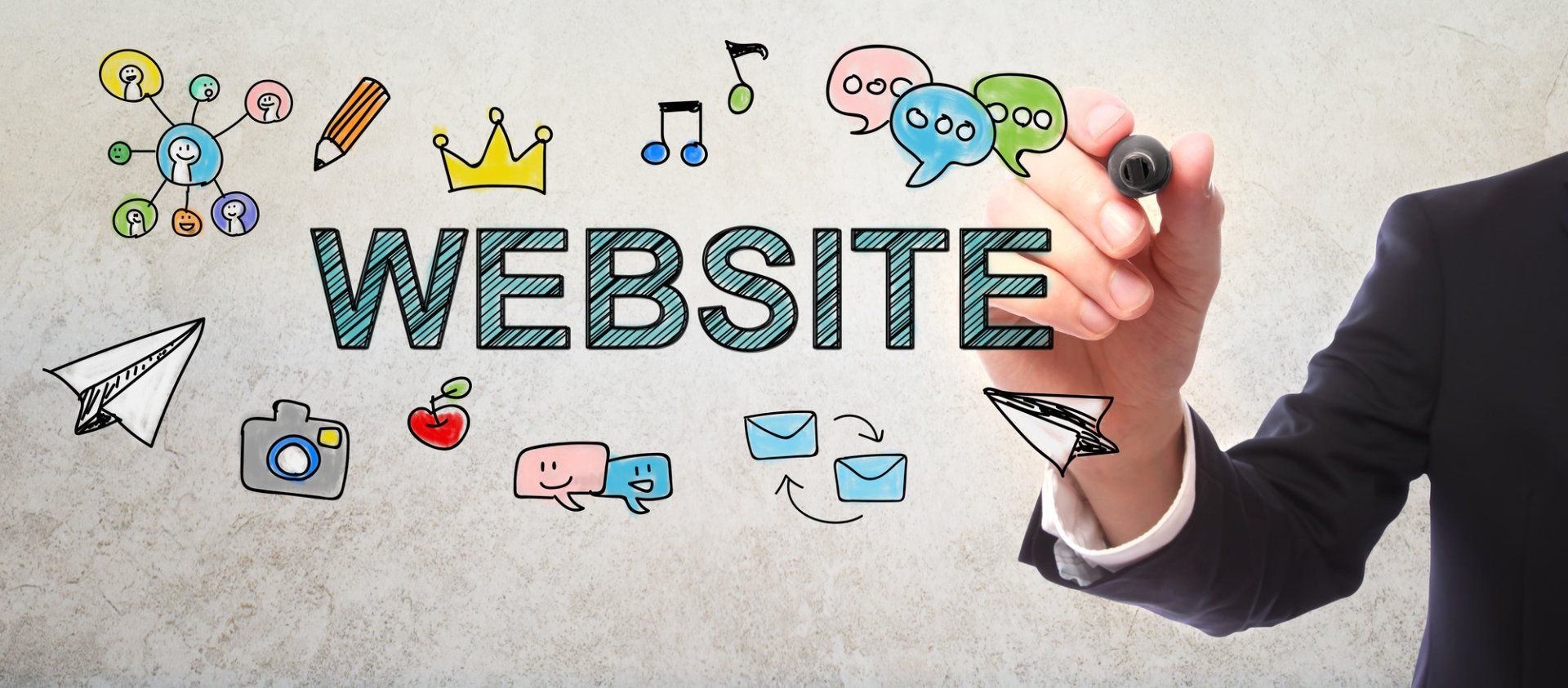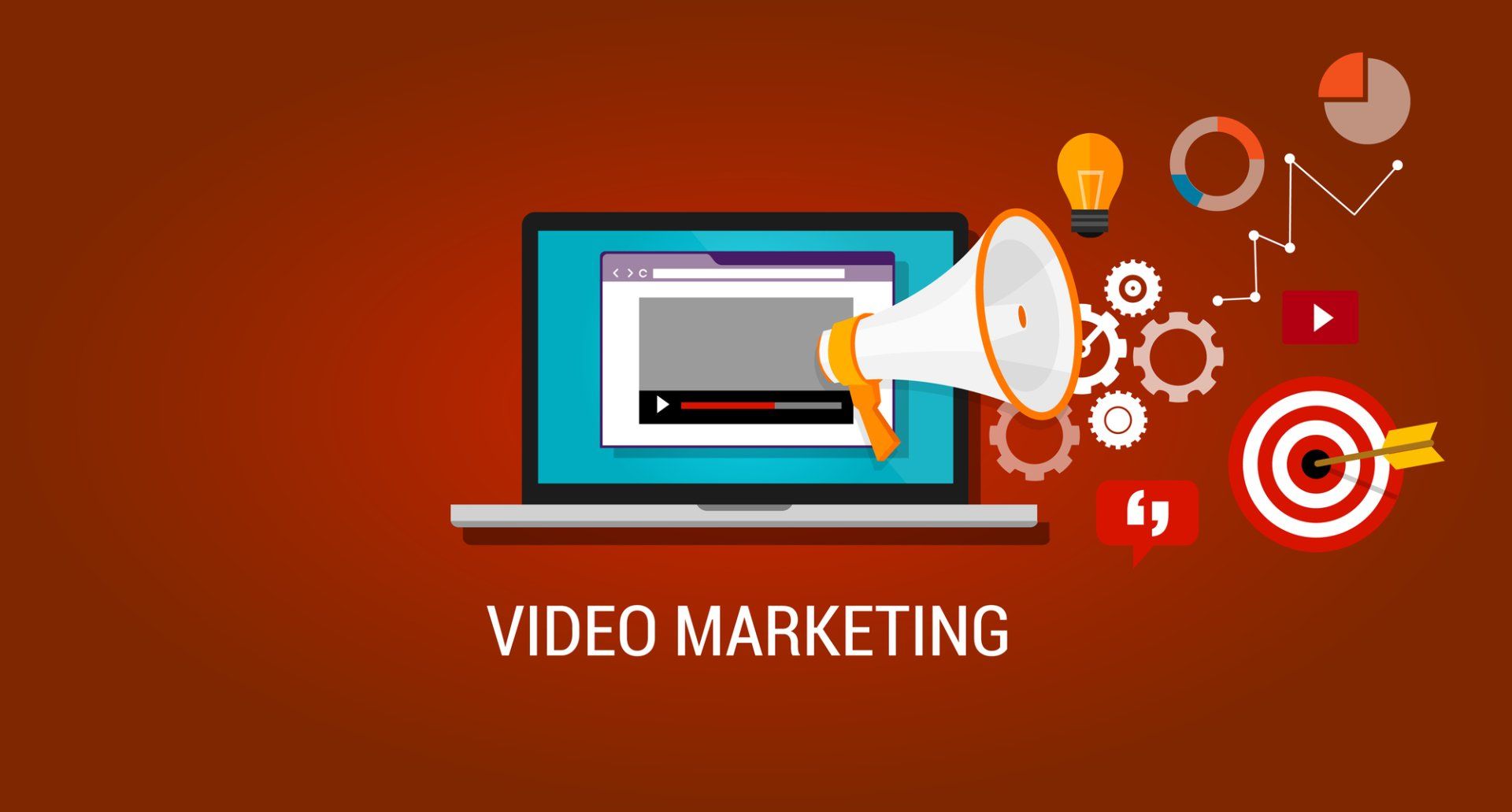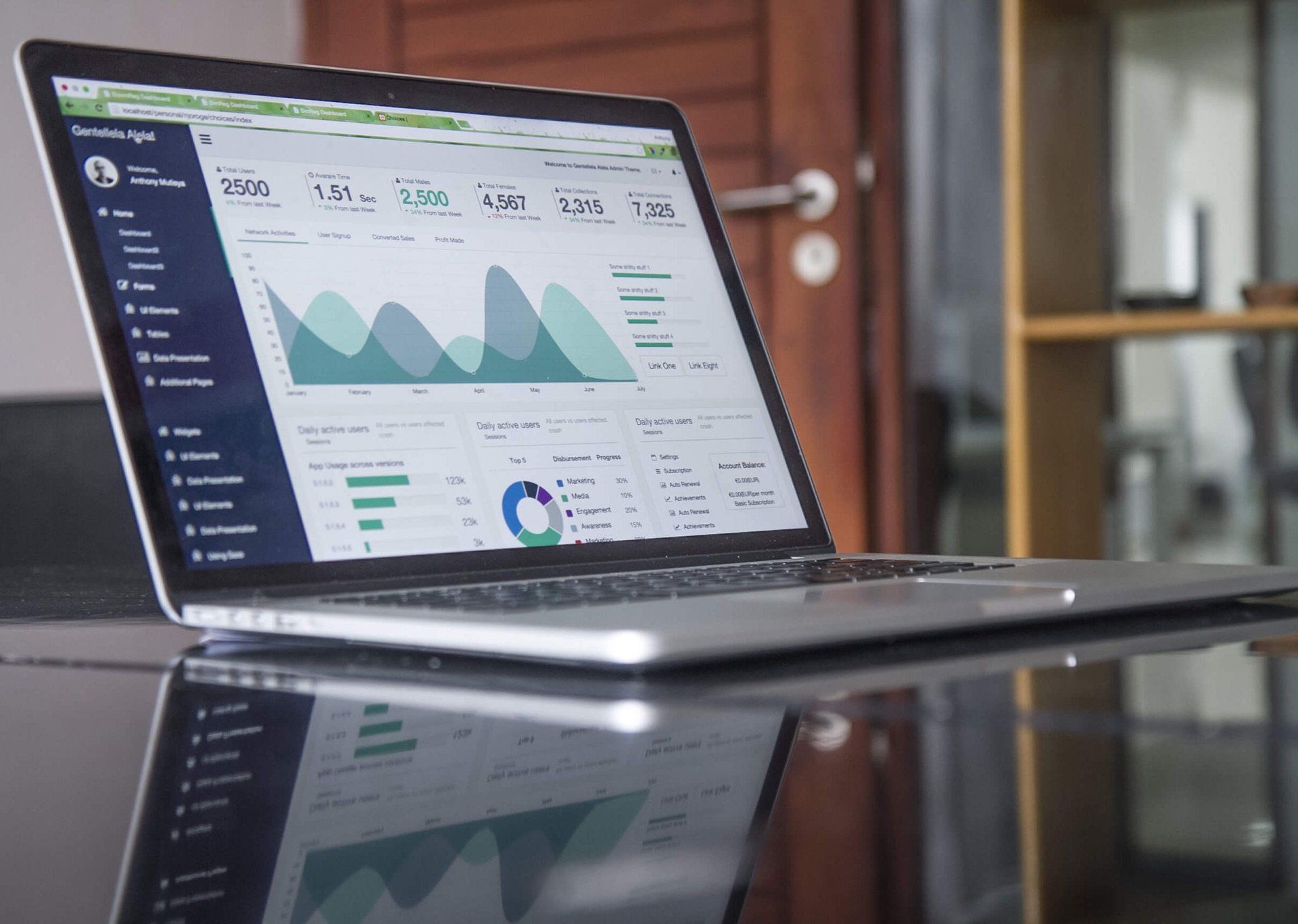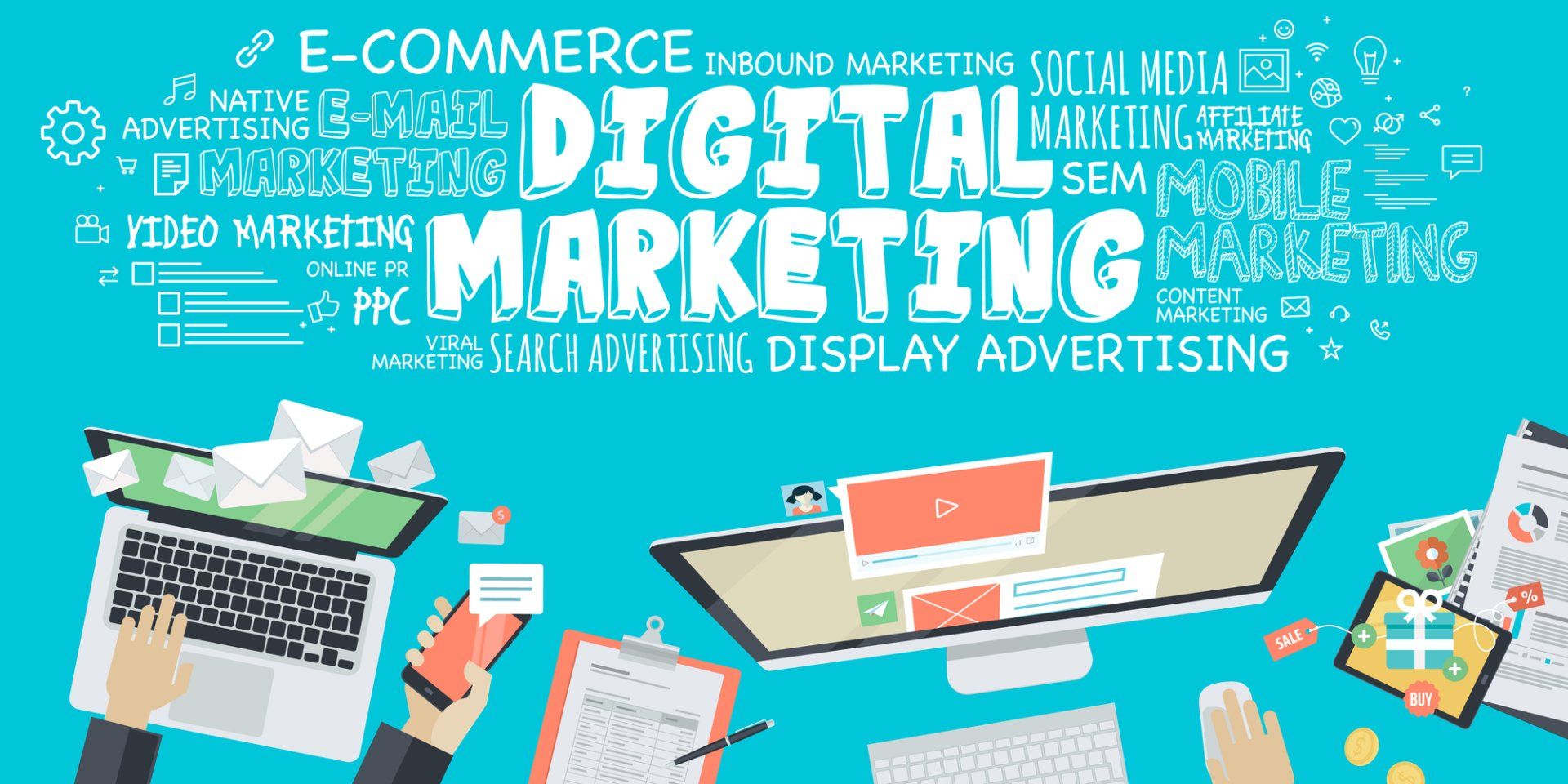12 Ways to turn your Website into a Sales Superstar
Emily Andrew • 2 April 2020
Building a website that looks immaculate and does what it says on the tin is great, but if the traffic doesn't convert into real leads, are all those good looks really worth your time?
Conversion is pretty much the holy grail of digital marketing; it's the end goal that we all strive for, but only the best succeed.
There are many ways to ensure that your business has a constant flow of leads with a powerful conversion rate and to make sure you get the most out of your website we've collated some of the best.
Here are 12 tips for getting your visitors to take positive action on your website, whether that's filling out a form online, sharing posts through social media, or making a purchase.

1. Write a Clear Call to Action (CTA)
How many times have you landed on a website that had a form or a button that simply stated "submit" or "continue"?
Call to Action's are some of the most important factors when considering conversions as they convince users to take the course we want them to. If a CTA isn't precise there's a possibility that conversion rates will suffer.
Consider the language used on your landing page buttons and ensure that it's specific and clear.
Draw your visitors in with eye-catching images, links and fun animations.
Test out several variations of a CTA button and see which one performs the best. If you're using a "buy now" or "order now" button may perform differently depending on where they are placed, their size and colour.
2. Optimise Your Forms
Are your online forms doing everything they can to get website visitors over the finish line?
If the main purpose of your website is to gain leads via an enquiry form, then you should do everything in your power to make the process as quick and simple as possible for a customer.
A form should be above the fold on your landing page so that the prospect doesn't have to scroll down the page to access it.
Otherwise. this could leave the potential customer unsure of the next step to take or how to obtain the
promoted offer.
The easier the form is to fill out, the more likely it is that someone will complete it. Forms should focus on getting leads into the sales funnel rather than obtaining a customer's personal details.
Remember: You can always ask any additional questions later on in the sales process.
Ensure that forms are user friendly and easy to complete on mobile, tablet and desktop. Any text should be easy to read and the form should fit within the device's screen. To check the mobile compatibility of your website's contact form, put the URL into Google's mobile-friendly testing tool.
3. Use Heat Maps and Polls
Information is power and heat maps are great to help you to understand a user's behaviour. If a picture is worth a thousand words, a single heatmap is worth a thousand numbers. They show which parts of your site are most engaging to visitors and give you useful insights
into which pages are most visited, whether visitors make it to the bottom of your page and if they are ignoring any call to action's.
There's no doubt that heatmaps are unique and provide answers that no other tool can. However, that doesn't mean they can tell you everything. They should be seen as one more hammer in your toolbox, one that works best when combined with others; this is where polls come in.
If visitors are bypassing your CTA button, consider setting up a user poll asking visitors what's keeping them from taking action. It's best to provide positive answers to choose from, for example: "I need more information", "This isn't something I need right now" or "I'm not quite ready".
4. Use Video to Humanise Your Brand
Visual content creates a deep connection between the brand and the viewer and if done right it can boost your engagement rate into the clouds. According to Brightcove's 2018 Video Marketing Survey, 53% of consumers report that they engage with a brand after viewing one of their videos on social media, which illustrates the importance of using video as an effective form of marketing.
According to Hubspot a video on your landing page can increase your conversion rate by 80%
and 64% of customers are more likely to buy a product online after watching a video about it.
If you don't have time for video you could try experimenting with GIFs (think video but faster) which automatically run, making them impossible togo unnoticed. GIFs attract attention and can quickly turn initial curiosity into genuine interest.
GIFs work particularly well for tech companies as they can simply explain a complex and technical solution by giving a quick visual walkthrough of how it works.
5. Meet the Expectations of Your PPC Visitors
If visitors are coming to your landing page via a Pay Per Click (PPC) advert, make sure that your copy is consistent throughout. You need to take into account the customer's expectations and their intent. In other words, understanding what they actually want to see, and what they actually want to do.
If you are doing the job half right, an ad should lead to a landing page that is specifically designed to mirror the text on that particular click through.
For instance, if someone types in "different types of road bikes" and clicks on your PPC ad, they will expect to land on a page that is about different types of road bikes.
6. Create Content Rich in SEO
If you haven't heard it yet, "content is king" and one of the easiest ways to create a regular stream of SEO content on your website is by including a blog. When a site has great content, it draws in lots of organic traffic. Blog pages are more engaging and are more likely to attract visitors than product pages, plus they help increase your authority in your field.
Don't discount those product pages though, they can serve as both SEO content and a pay-per click landing page. An integral part of this content is finding important keywords and phrases that your audience use to search on Google. You can take advantage of Google Keyword Planner, which is a free tool to find out terms and phrases that your audience use most.
Once you have compiled a list of key terms, you should then incorporate them naturally into your content.
If your content is informative and well written, it is more likely that Google will rank your website higher, allowing you to pull in a steady audience of loyal, consistent visitors.
7. Improve Your Site Speed
No matter how much time and effort goes into creating a website, viewers will quickly leave if it doesn't grab their attention. Window of engagement is smaller than ever these days, so you've got to be quick off the mark.
A one second delay in a page response can result in a 7% reduction in conversions, 16% decrease in customer satisfaction and 11% fewer page views according to Kissmetrics.
In fact 47% of consumers expect websites to load in two seconds or less - and 40% will abandon a page that takes three or more seconds.
This means that if your site takes more than three seconds to load, you lose almost half of your visitors before they even arrive on your site, which has a huge impact on any potential conversions.
When Firefox reduced average load times by 2.2 seconds, they increased conversions by 15.4%. This means that having a fast site is essential, not just for ranking high on Google, but for keeping your bottom-line profits high.
There are a number of steps you can take to speed up your website, but firstly consider resizing the images on your website with tinypng.com, compress your site and install Google PageSpeed.
8. Be Present on Social Media
A powerful presence that promotes engagement and organic leads. If you have a blog make sure to connect it to any social media you may have so that they work seamlessly and promote your online brand.
Whenever you publish content on your website, ensure that you link it through your social media channels and encourage users to share your content.
Make sure you include icons and buttons at the bottom of any blog posts so that readers can instantly share content with their own networks.
Content marketing is also essential for both website and social media as it engages an audience through elaborative content. Directing social media followers to your website ensures that the prospects can then browse other blog posts and web pages, potentially converting to paying customers. By generating more traffic to your website through social media, you're also improving the likelihood that your content will be shared elsewhere online, leading to an improved SEO meaning your website will rank more highly for relevant search terms.
9. Get Mobile.
It is absolutely essential in today's world that you ensure your website is optimised for mobile. We are no longer living in a world where smartphone users can be considered as the exceptions.
Did you know that mobile devices account for approximately half of web traffic worldwide?
According to Statista, in the first quarter one 2019, mobile devices (excluding tablets) generated 48.71% of global website traffic. If you don't want to miss out you need to ensure your website can be viewed perfectly from any device.
10. Develop Thank You Pages
Even after you've captured your lead or completed a conversion it is fundamental that you remember to say thank you.
Not only do these pages notify the customer that their enquiry has been received so they leave feeling satisfied but also allow for next steps.For example, if you link to a blog post or your homepage this keeps the customer engaged and on your website for longer.
Don't be hesitant to include exploratory links on this page either, showing other products or services that customers may be interested in. You never know, it may even push them towards another conversion!
11. Use Exit-Intent Popups
We think that these are an absolute game changer. Exit-Intent technology detects your visitor's mouse behaviour and gives you the ability to trigger a pop up just as the user is about to leave the page.
You can use this in whatever way you want, either by creating a special offer to re-engage the visitor or by prompting them to subscribe to your mailing list in return for a download.
If a visitor is on your blog why not use these pop ups and trigger a message to them, giving the option to save the article before they leave,? You can send a PDF version of the post to their email which means that you also get the opportunity to bag a lead.
If your company celebrates holidays such as Christmas, Easter etc then create special seasonal offers to appear on the screen to keep your website fun and popping with style.
12. Create Legendary Landing Pages
Landing pages are like the ultimate sales pitch of your company and as a result you want to ensure they are direct, intriguing and totally irresistible. Our attention spans are getting shorter and shorter so by creating a landing page that gets to the point and keeps the user focused on your CTA you're sure to capture a higher rate of conversion.
Use relevant keywords to keep your landing page in Google's good books without cluttering up the screen with unnecessary text. If you need to explain something why not use animation or images to keep things clear and eye- catching.
Remember that one size doesn't fit all, what may work for one landing page may not necessarily work for another.
Revist your website, gather the appropriate data and insights on your visitor behaviour and be sure to get your website working at optimum speed. Use the relevant tools to keep testing features and watch as your conversions rocket.
You can download and keep this article here.
More Posts.

In today's digital landscape, effective content marketing can be the key differentiator for small businesses striving to stand out. As consumers increasingly turn to online platforms for information, brands must engage their audiences through valuable content that resonates with their needs. Understanding the nuances of content marketing is crucial; it encompasses various strategies designed to attract, inform, and delight customers while ultimately driving sales. From developing engaging customer personas to measuring success through specific metrics, small businesses have an incredible opportunity to refine their marketing approach. This article explores eight proven strategies that can lead to content marketing success for small businesses, equipping you with the tools necessary to create impactful and sustainable marketing efforts. 1. Understanding the Importance of Content Marketing Content marketing is vital for small businesses. It helps connect them with their target audience, builds brand awareness, and drives organic traffic. A well thought out content marketing strategy lets small businesses compete with larger companies by using cost effective methods. Regularly sharing valuable content can position a business as an expert in its field. This fosters trust and encourages potential customers to seek their services. Documenting your content strategy also increases the chances of seeing your marketing efforts as effective, allowing a higher allocation of budget toward content marketing. Creating a diverse range of content types is key. Here are some content formats to consider: Blog Posts Social Media Posts Email Marketing Visual Content Developing a strategic content plan helps business owners carve out unique market spaces. Establishing clear business goals and using tools like Google Analytics to gauge conversion rates can refine your approach. Below is a quick checklist for effective content marketing: Know your target audience Set SMART goals Use a content calendar Perform a content audit By focusing on these elements, small businesses can enhance their content marketing efforts and achieve growth. 2. Developing Customer Personas for Targeted Engagement To create targeted content, small business owners should develop detailed buyer personas. These personas are fictional versions of ideal customers, including demographic and psychographic details. Tools like Google Analytics and social media insights provide valuable data to shape these personas, making them more accurate. Understanding your target audience through buyer personas is key. It allows content marketers to tailor pieces of content that address specific needs and challenges. This approach boosts engagement and builds trust with potential customers. It is often necessary to have multiple personas to cater to various products, services, or customer segments. Each persona reflects different motivations and interactions with your brand at various stages of the customer journey. Here's how you can develop them: Collect Data: Use surveys, Google Analytics, and social media insights. Analyse: Determine the needs, interests, and behaviours of your audience. Create Multiple Personas: Define different segments based on your findings. Tailor Content: Use the personas to guide your content marketing efforts. Effective personas lead to a successful content marketing strategy, enhancing your business goals with every piece of content created. 3. Crafting a Comprehensive Content Plan Creating a successful content plan is key for small business owners. It acts as a guide to align all your content marketing efforts with your business goals. Here’s how you can craft a comprehensive content plan: Identify Key Topic Areas: Focus on subjects relevant to your target audience. This ensures you create valuable content that speaks directly to potential customers. Choose Content Types: Use a mix of blog posts, infographics, and videos. Different content formats can help engage various segments of your market. Plan Distribution Channels: Decide where to share your content. Consider social media posts, email marketing, and your website for maximum reach. Set Calls to Action: Encourage your audience to take the next step. This could be signing up for a newsletter or visiting a product page. Utilise a Content Calendar: This keeps your content marketing strategy organised and consistent, minimising missed opportunities. Analyse Metrics: Use Google Analytics to track conversion rates, engagement, and content performance. Including these elements in your content plan aligns with the fact that structured strategies significantly boost success rates. Regular content audits refine this strategy further, ensuring continued engagement and growth .

Heading 1 Artificial intelligence (AI) has had a huge impact in many areas of life and SEO is no exception. While it has made online searches easier for consumers, keeping up with it and staying ahead as a business can be challenging. As Google integrates advanced AI into its search results, businesses must rethink their SEO strategies. Understanding the future of SEO in the context of AI is essential to appear high on search rankings and remain competitive. Traditionally, search engine optimisation (SEO) has relied largely on keyword optimisation and link building. If you sell garden products, you would make sure the phrase ‘garden products’ was used frequently throughout your website. You would also look to get some links back to your site from other websites – maybe other businesses in your local area or in a complementary sector. These traditional SEO methods are becoming less effective. AI means search engines like Google and Bing have become better at understanding the intent behind a search, through machine learning algorithms analysing huge quantities of data, as well as natural language processing. Natural language processing doesn’t just understand the words in a query, it understands the context and intent behind it. AI can even understand synonyms, slang and regional variation in language! When someone searches for something online, AI can analyse, interpret and predict their behaviour. So businesses have to adapt their SEO strategies to changing algorithms to stay competitive. You need to have a deeper understanding of your target audience and produce content which meets their needs and answers their queries. It is about providing the best answer to the questions your audience is asking, because AI algorithms are skilled at recognising content which meets the search intent of users and provides value. This means that content which is designed to meet specific needs, answer questions and provide the solutions to problems is more likely to rank higher in searches. AI algorithms will prioritise content which resonates with users on a human level – with every paragraph adding more value and depth. This aligns with AI’s preference for content which engages and informs – and also helps build a stronger connection with your target audience. In addition, AI is making voice searches (e.g. Alexa) much more effective. Voice searches tend to use more words than online searches e.g. ‘find me healthy snacks for pre-school children’ rather than just typing ‘healthy snacks’ into Google with no context. This aspect of AI will continue to grow in importance and become even more widely used.








